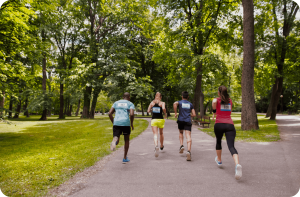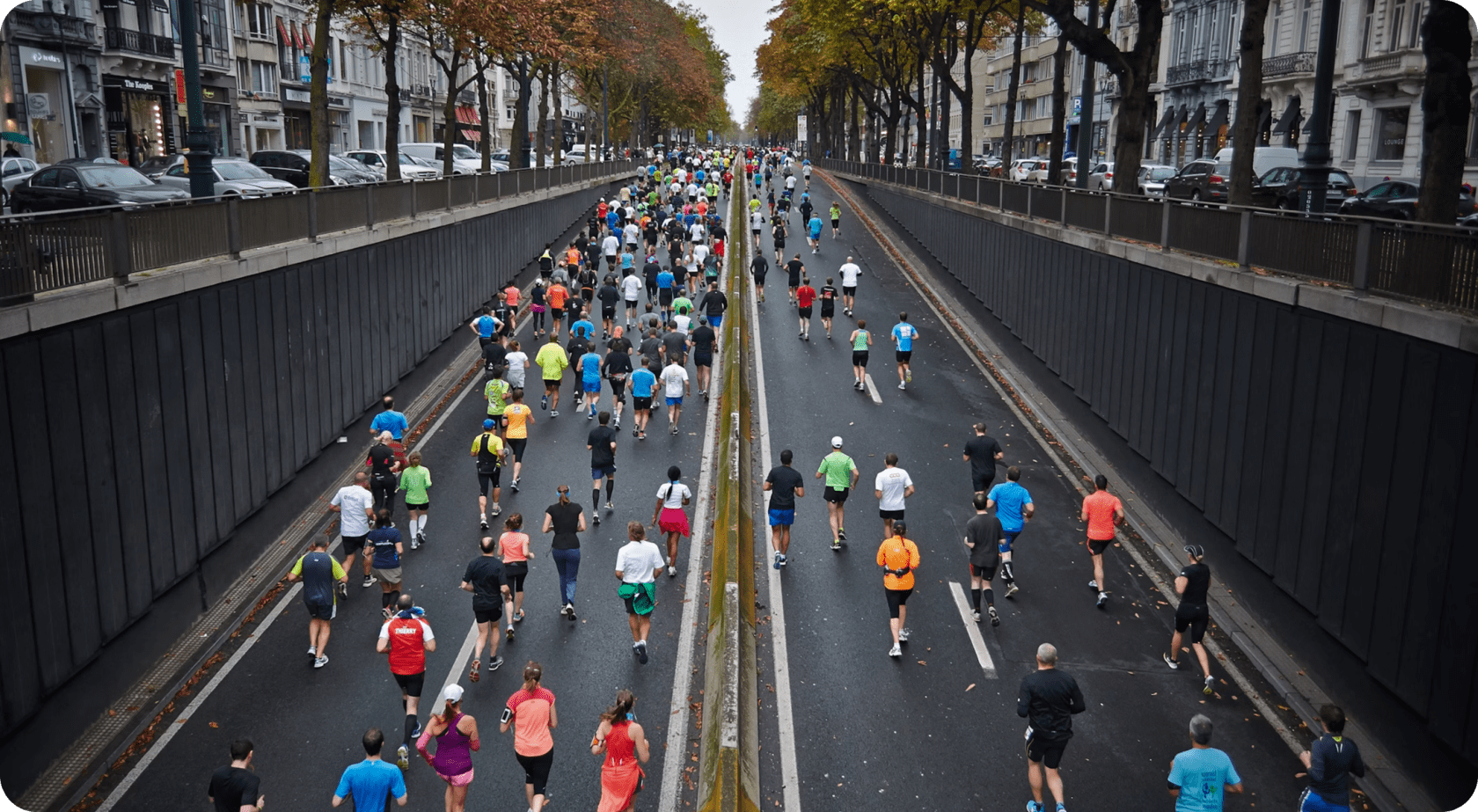Are you wondering what is the best pace strategy for the marathon?
Read on to find out the answer and discover some tips and pitfalls from the top runners.
Hopefully, this information will help you increase your chances of race day success.
What is a Pace Strategy?
Your pace is basically how fast you move. Usually, it is represented in minutes per kilometer or minutes per mile.
So, if it takes you 5 minutes and 40 seconds to run one kilometer, your pace is 5:40.
If you keep running for another 9 kilometers, and you finish the 10 kilometers in one hour (60 minutes), your average pace will be 6:00.
Therefore, a race pace strategy can be a pre-determined game plan to calculate what pace you should run at within certain sections of the race to optimize your results.
Check out this marathon training plan for beginners to learn more about the right training strategy and workout schedule examples.
What is the Best Pace Strategy for a Marathon?
According to the book called The Science and Practice of Middle and Long-Distance Running, the best way to reach your pacing goals is to be as consistent as possible with your splits.
And, if you still have gas in the tank, you can kick it off and notch the final kilometers and potentially negative split.
Negative splits is the term meaning your second half was faster than your first half.
However, this consistent pace strategy has one major limitation, and that is if the course has a significant amount of hills. In this case, you want to maintain the same level of effort rather than maintain a steady pace.
When climbing hills, you may need to slow down to keep the effort level manageable and avoid burning out early. On downhills, you can speed up a little to make up some of the lost time, but without overdoing it, as downhill running can be hard on your muscles.
Anaerobic Threshold Strategy
My main recommendation is to run on the heart rate.
This approach is based on running by heart rate (pulse) rather than pace, particularly in relation to your anaerobic threshold (pano).
Here’s how it works step by step:
1. Start Below Your Anaerobic Threshold (Pano 8-10 Beats Lower)
Your anaerobic threshold (pano) is the heart rate at which your body starts accumulating lactate faster than it can clear it. Running above this level for too long leads to quicker fatigue.
The idea is to start the race 8-10 beats per minute (BPM) below this threshold to conserve energy and avoid early burnout.
Your heart rate will naturally rise as the race progresses, even if you maintain the same pace.
2. Fueling: At Least 60g of Carbohydrates Per Hour
To sustain your effort, you should consume at least 60 grams of carbohydrates per hour (e.g., sports drinks, gels, or energy chews).
This helps prevent glycogen depletion (bonking) and keeps your heart rate and effort level stable.
3. Check Your Heart Rate vs. Pace After 30km
By 30km (around 18.5 miles), fatigue sets in, and your heart rate might be higher even if your pace remains the same.
Ask yourself:
- Am I still running the same pace (e.g., 4:00 min/km) at the same heart rate?
- Has my heart rate increased while my pace has dropped?
- Am I feeling cramps or extreme fatigue?
4. Adjust Based on How You Feel
If your heart rate has spiked but your pace has slowed, you may be pushing too hard. That means it’s time to manage effort carefully.
If you haven’t experienced cramps or major fatigue, you can gradually increase your pace in the final stretch.
5. Last 5km: Push to Your Anaerobic Threshold (Pano Level)
If you’re feeling strong, the last 5km should be run at your anaerobic threshold heart rate or slightly above.
This ensures you finish strong without overexerting too early.
This strategy prioritizes effort over strict pacing and helps you avoid early burnout while maximizing endurance for a strong finish.
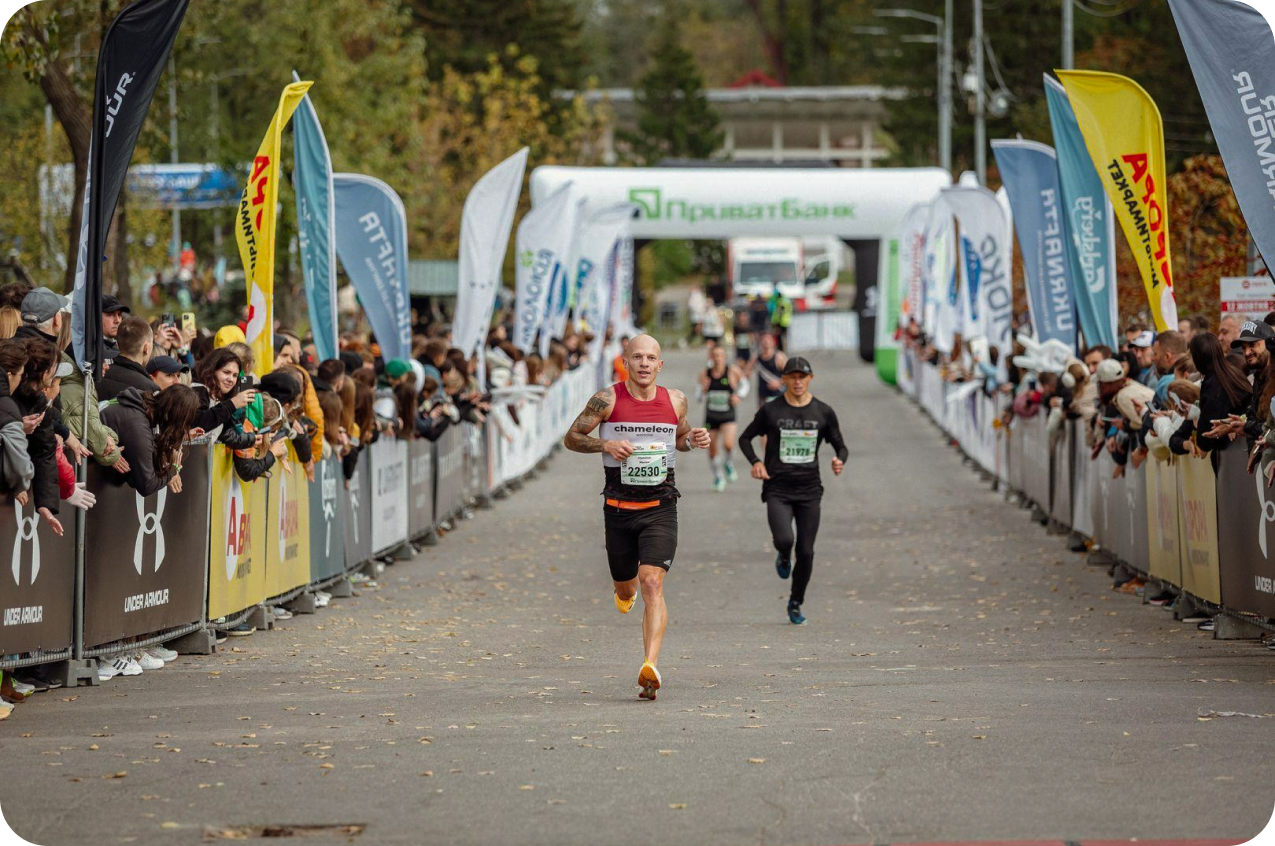
How to Determine Pace Strategy?
To create a pacing strategy, you can take your previous marathon time as a rangefinder.
But, additionally, you want to layer on other factors such as your current training and race day weather.
For example, if injuries have hindered your recent training sessions or you have trained less than usual, and the weather is not as you expected (it’s too hot and humid) — considering these factors will help you develop a more accurate target pace for the marathon race day.
And if it is your first marathon, you obviously can’t refer to the last marathon as a rangefinder.
In this case, Brian Hanley, the co-author of the book I’ve mentioned earlier, offers the following tips:
- Take your half-marathon race PR, double it to allow for extra fatigue, and add 10 minutes (for more recreational runners, he suggests adding 20 minutes to the estimated time).
- If your half-marathon was 1:40, then your marathon time can be around 3 hours and 20 minutes. Add 20 minutes of extra time, and you will end up with a 3-hour and 40-minute marathon time prediction.
- Using the pace calculator, you can estimate that this time goal results in an average pace of 5:13 per kilometer.
You can use our marathon time predictor for more personalized marathon time estimates.
And if you don’t have a half marathon under your belt, you can use your 10k or even 5k results.
Since these distances are far from the marathon, the results will be less accurate.
A professional coach can help you develop the ultimate race pace strategy.
Executing Your Pacing Strategy on Race Day
Race day can bring surprises, but the key is sticking to your pacing plan while being open to adjustments based on how you’re feeling, the weather, or even how other runners are pacing.
First, it’s important to have a plan, but don’t be too rigid about it.
Your body might feel different than it did in training, or the weather could throw a curveball.
If the conditions are hotter than you expected, you may need to ease up a bit, especially in the first half. It’s okay to adjust — just listen to your body.
Knowing your planned splits ahead of time is really helpful for monitoring your progress.
Most runners use pacing bands or apps to track their splits at each mile.
This way, you can tell if you’re right on target or if you need to dial it back a little. It gives you confidence and helps keep you on track throughout the race.
If the weather turns hot, one of the smartest things you can do is to run conservatively during the first half.
Your body will work harder to stay cool, and you’ll want to conserve energy for later.
Expect that your running performance might dip as the race goes on, and by pacing yourself wisely early on, you’ll have enough in the tank to power through the final miles.
The Best Strategy to Starting the Marathon
You want to start the race slightly slower. A slow time will help you avoid slowing down in the second half of the race.
Even if you think that you can hold a certain pace comfortably for the entire marathon, the consequence of getting this slightly off and running faster at the beginning will dramatically impact the fatigue and your finish time.
In fact, one of the biggest mistakes marathon runners make quite often is starting off too fast.
It may be an accidental case. You just feel rushed at the moment, seeing other runners start passing you, and you end up throwing out your pre-determined plan and speeding up. Or, you just take the risk and decide to run faster.
This paper from Frontiers in Psychology has surveyed 1300 marathon runners. They have discovered that:
Marathoners who slow more in the second half exhibit a larger discrepancy between their pre-race self-forecasts and their actual performance.
This means that overconfidence leads to greater slowing compared to runners with more reasonable and realistic expectations of their goal marathon pace.
Again, this research only illustrates the fact that sensible planning will increase the likelihood of success.
It is often said that for every one minute run too fast at the first few miles/kilometers, one sacrifices two minutes in the second half of the race.
So, if we bring on our example of an estimated even pace of 5:13 per kilometer, then taking into account this factor, you can start the race slower, like 5:18, and then gear up later.
However, this advice is less relatable for elite runners who are looking to win the race or set new PBs. They use different tactics and race strategies.
How to Monitor Your Marathon Pacing Strategy?
The first tip, and the most obvious one, is to monitor your splits with your watch.
If you are looking for a good watch, check out this guide on choosing the best triathlon watch; there, we have gathered some of the best ones and compared them so that it would be easier for you to make your choice.
You can set an alert to notify you every mile/kilometer or even splits of 5 and 10 kilometers to ensure you are on task.
However, constantly monitoring your pace requires brain power, and your brain requires energy to operate. So if your brain is constantly operating at a high level with checks and balances, it is going to zap important energy from the rest of the body.
To get to this finish line, you want to take the path of least resistance, both physically and mentally.
So, how can you do that?
You can use pacers.
Pacers are runners who volunteer in big events. They usually have some sort of flags or visible indication of what time they will finish.
If you find the pacer that matches your goal time, all you need to do is follow them. This way, all of the cognitive load is gone.
When tracking your run data with a smartwatch, keep in mind that not all smartwatches provide accurate data. Here is more information about how accurare are triathlon watches.
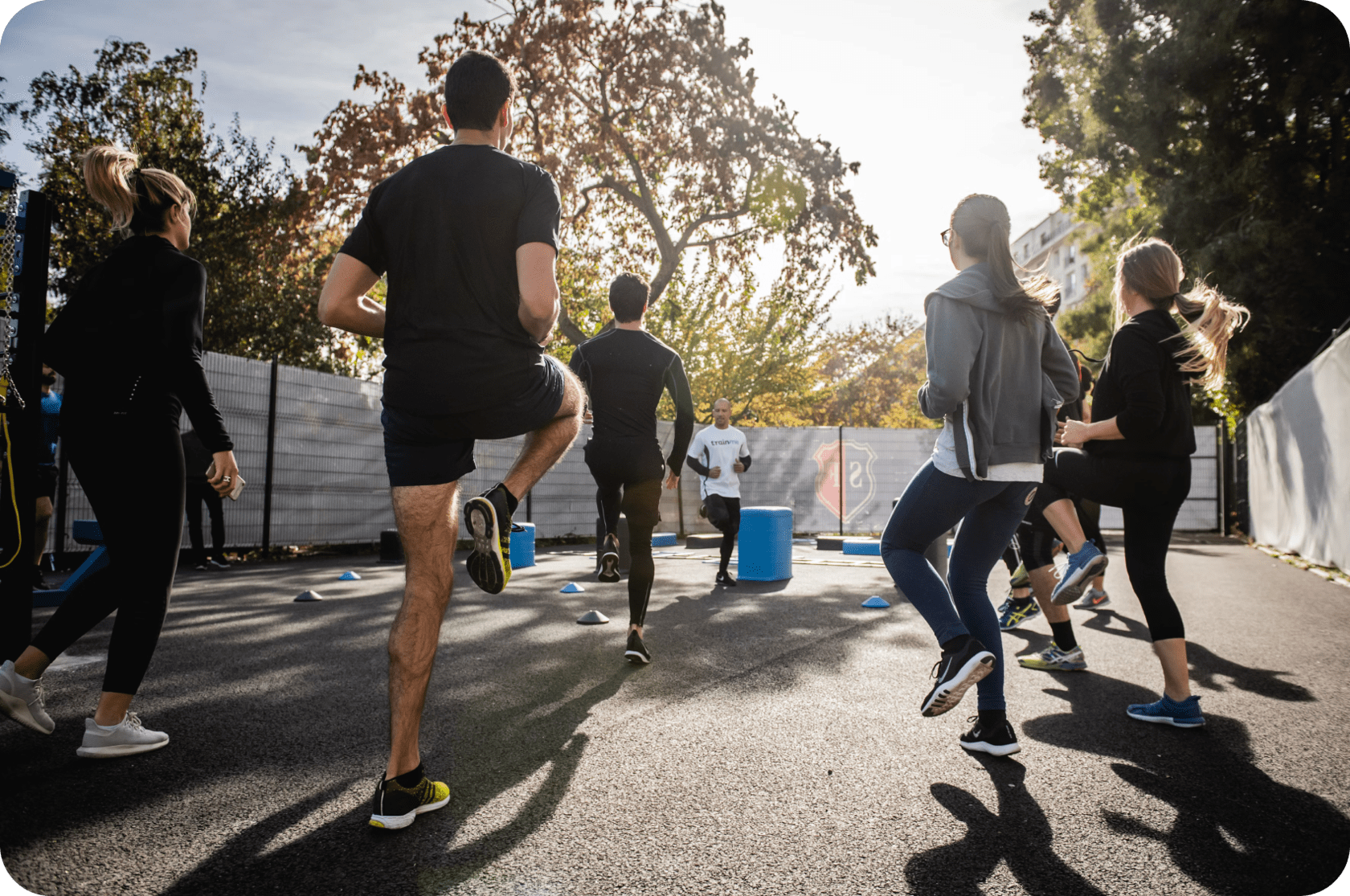
Additional Tips for Optimal Marathon Pace Performance
Here are key insights and methods to help you manage your pace throughout the race. They are based on personal experience and the recent marathon race recap story.
1. Get Comfortable Running at Your Goal Pace
Long runs are the perfect time to lock in your marathon pace. Instead of just running for distance, try incorporating sections at your target pace to help your body get used to the effort.
A great way to do this is by gradually increasing your pace in the last few miles.
You can also check a marathon pace chart to determine your goal splits and ensure you’re training at the right intensity.
2. Add Some Speed Work to the Mix
Even if you’re not aiming for a personal best, speed workouts like intervals and tempo runs can make a huge difference in your endurance and efficiency.
Intervals (like 800m or mile repeats) help improve leg turnover, while tempo runs (sustained effort at a slightly uncomfortable pace) build stamina.
Try doing one speed-focused workout each week — it’ll help you feel smoother and stronger on race day. Here is how to increase mileage running.
3. Prioritize Recovery — It’s Just as Important as Training
More running doesn’t always mean better results.
Recovery is key to avoiding burnout and injuries.
Aim for at least 7-9 hours of sleep per night, fuel up with good nutrition (think carbs, protein, and healthy fats), and don’t skip rest days.
Easy recovery runs also play a role in healing — sometimes, slowing down is what actually helps you speed up.
4. Start Smart and Finish Strong (Negative Splits!)
One of the biggest mistakes marathoners make is starting too fast and running out of gas halfway through.
Instead, pace yourself so you run the second half slightly faster than the first.
This way, you conserve energy early on and can pick up the pace when it really counts.
Practice this during base running training by starting your runs relaxed and finishing a little faster.
5. Train Like It’s Race Day
Want race day to feel smooth?
Then don’t let anything be a surprise.
If your marathon course has hills, practice running on similar terrain. If you’re racing in warm weather, try running in similar conditions.
And most importantly, test your gear, practice how to carry water when running, and check your fueling plan during training. Nothing ruins a race like discovering your shoes rub the wrong way at mile 10 or that a certain gel doesn’t sit well with your stomach.
Here’s a more detailed pre-marathon checklist to help you get ready for the race.
6. Listen to Your Body and Be Flexible
Even with the best training, some days just feel off. That’s okay!
If your body is telling you to slow down or adjust your plan, listen.
Running a marathon is about strategy, not just speed, and making smart adjustments can keep you from hitting the wall.
Stay in tune with how you feel, and don’t be afraid to ease up if you need to — it’s better to finish feeling strong than to crash halfway through.
Mental Preparation and Focus
Long-distance running is a mental sport, too.
The marathon pacing strategy also requires mental toughness.
If you’ve ever run a marathon before, you know the mind games it plays and the victims it claims if you are not psychologically prepared.
When you see people get ahead of you in the first half of the marathon, it can be quite demoralizing. So, you start pacing up and ignore your goal marathon pace strategy.
And that actually backfires at the end of the race. When you get tired, you drop off, and that becomes even more demoralizing than if you let them go in the first half of the distance.
Brian Hanley highlights that the better strategy is to start off slowly and be disciplined in knowing that you will speed up later.
When you pass people out in the second half of the race, you will feel a great boost of confidence that will encourage you.
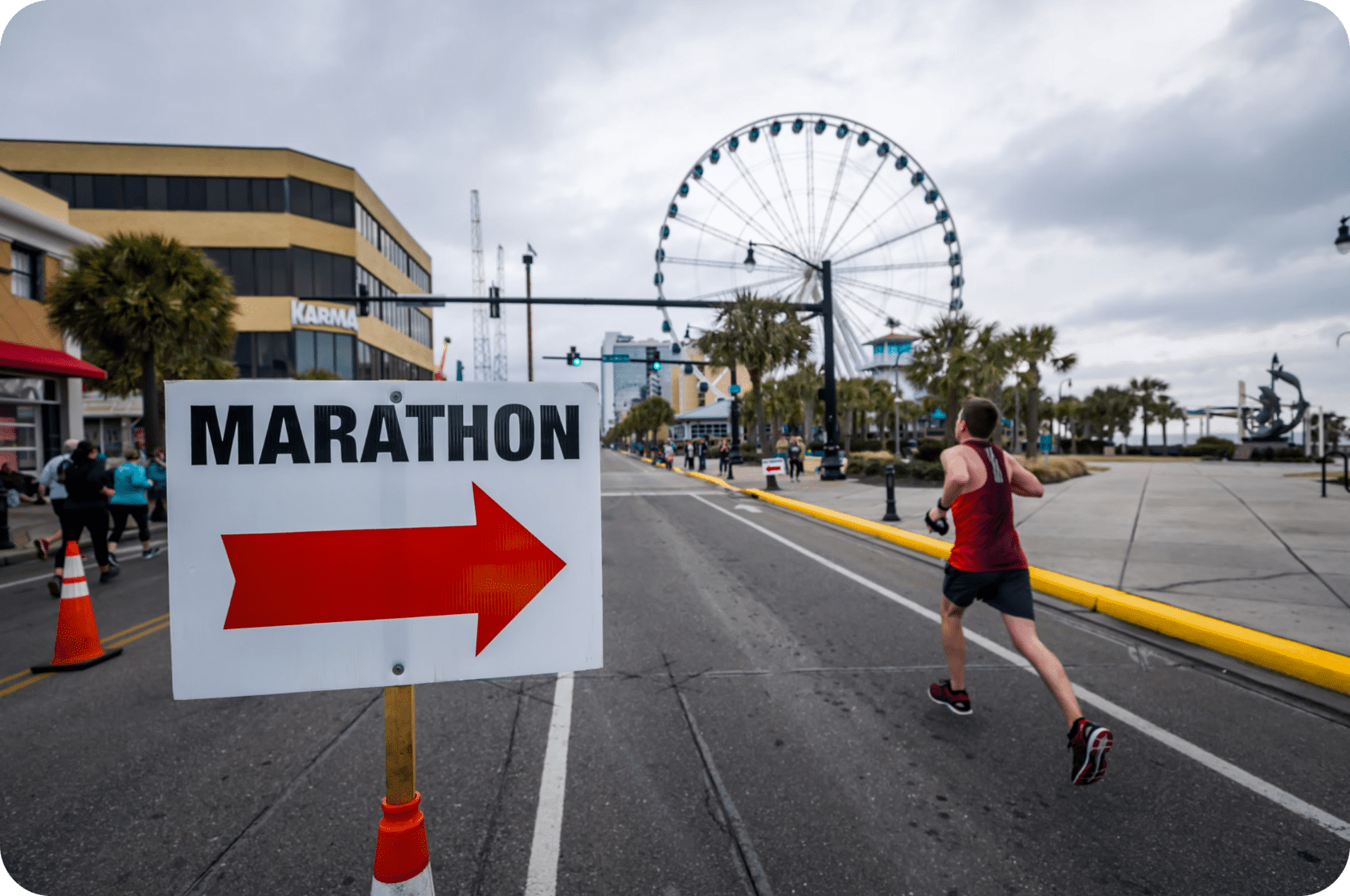
Wrapping Up
Marathon training is a big deal in the life of every runner.
Whether you are a novice runner or a pro with multiple races behind your back, proper marathon preparation increases your chances of success.
Train smart, create a race strategy, and do not forget about fueling.
Nutrition strategy is another vital aspect of your marathon preparation. You need to plan what to eat the morning of the marathon, as well as your post-marathon meals. Then, you’ll go into your marathon feeling prepared, both physically and mentally.
Also, plan your recovery ahead. Check out this post-marathon recovery plan for insights on what to do before you cross that finish line.
